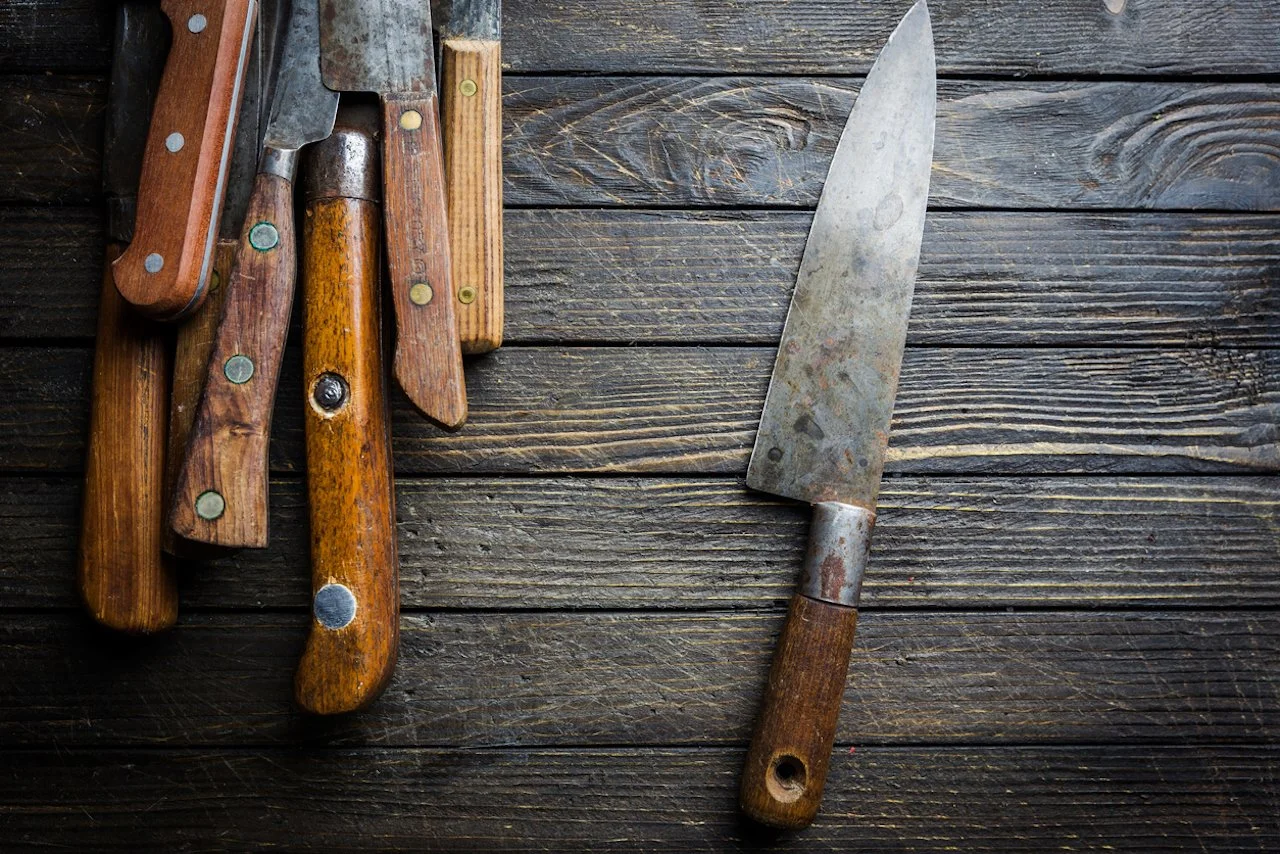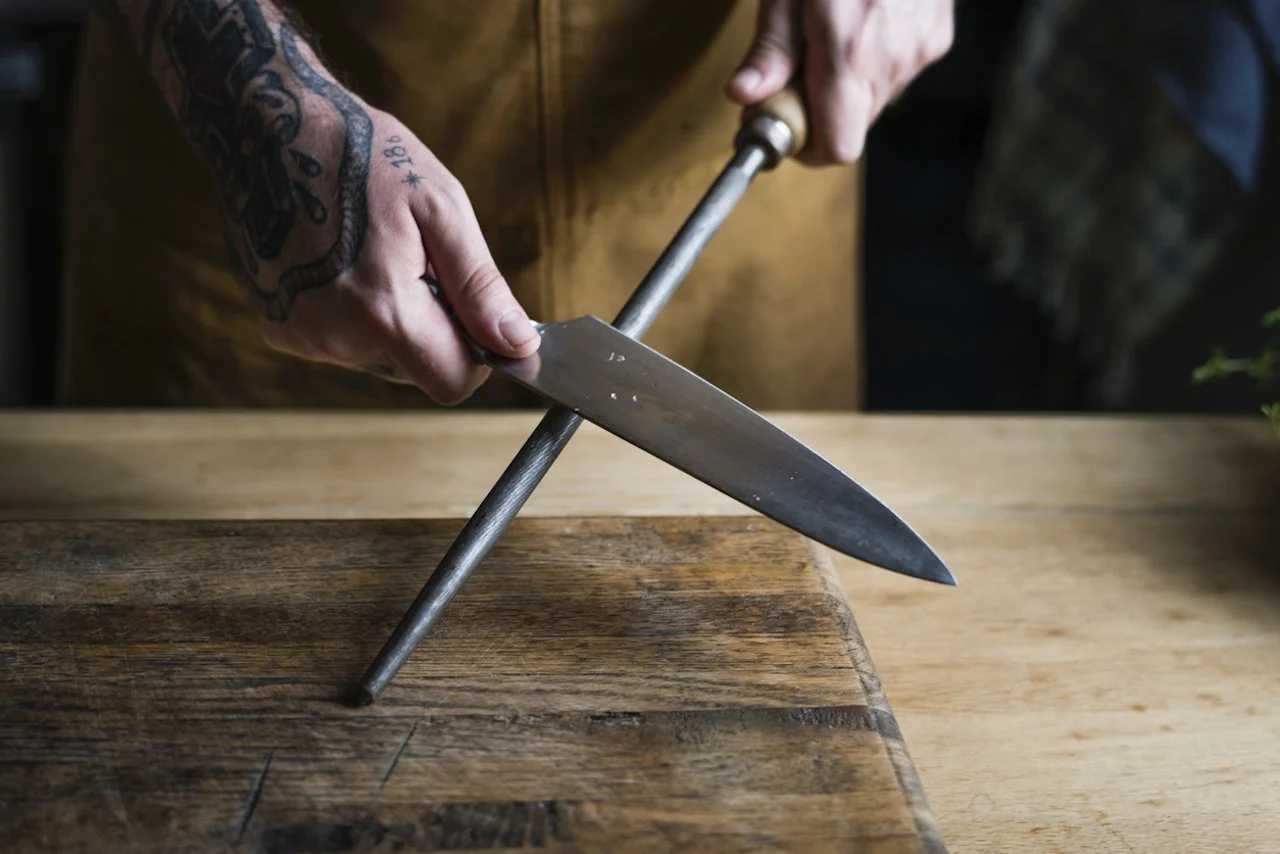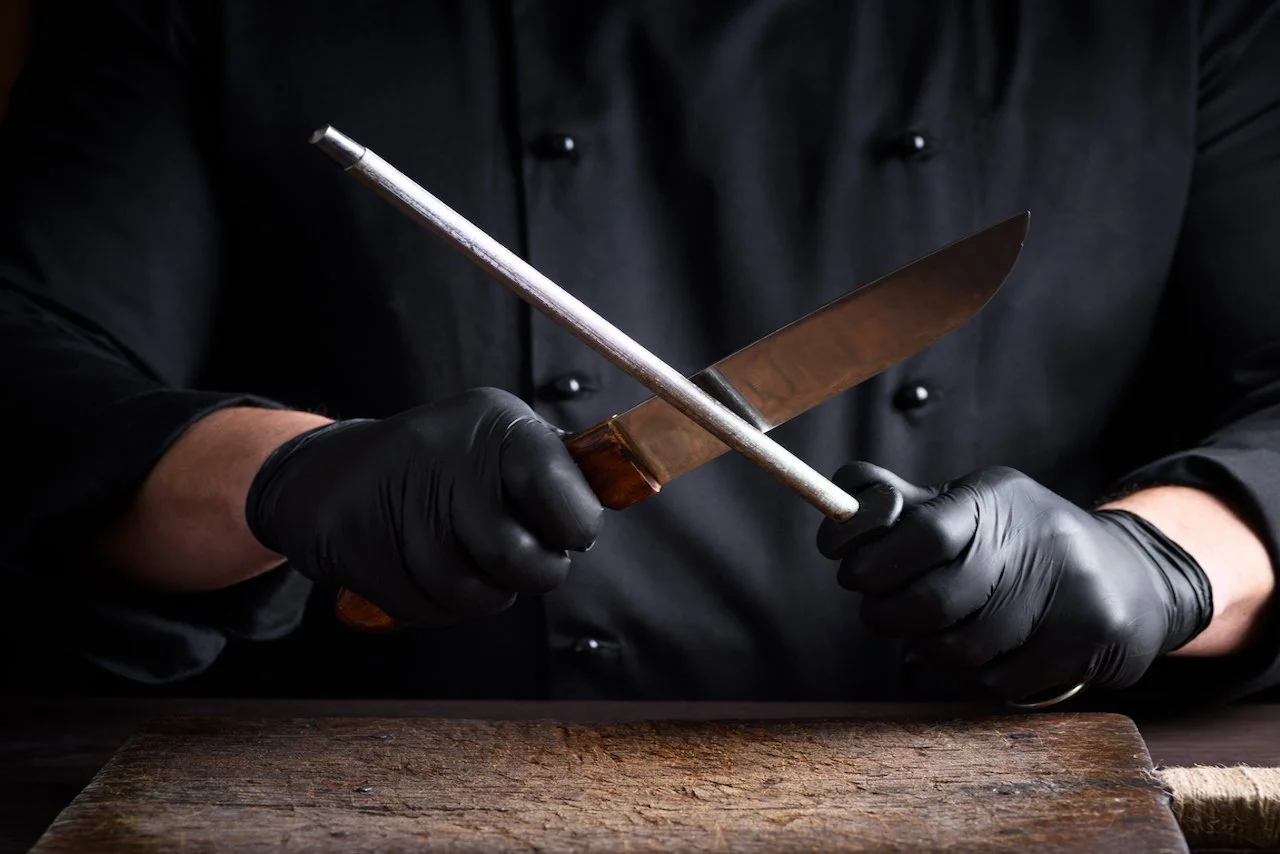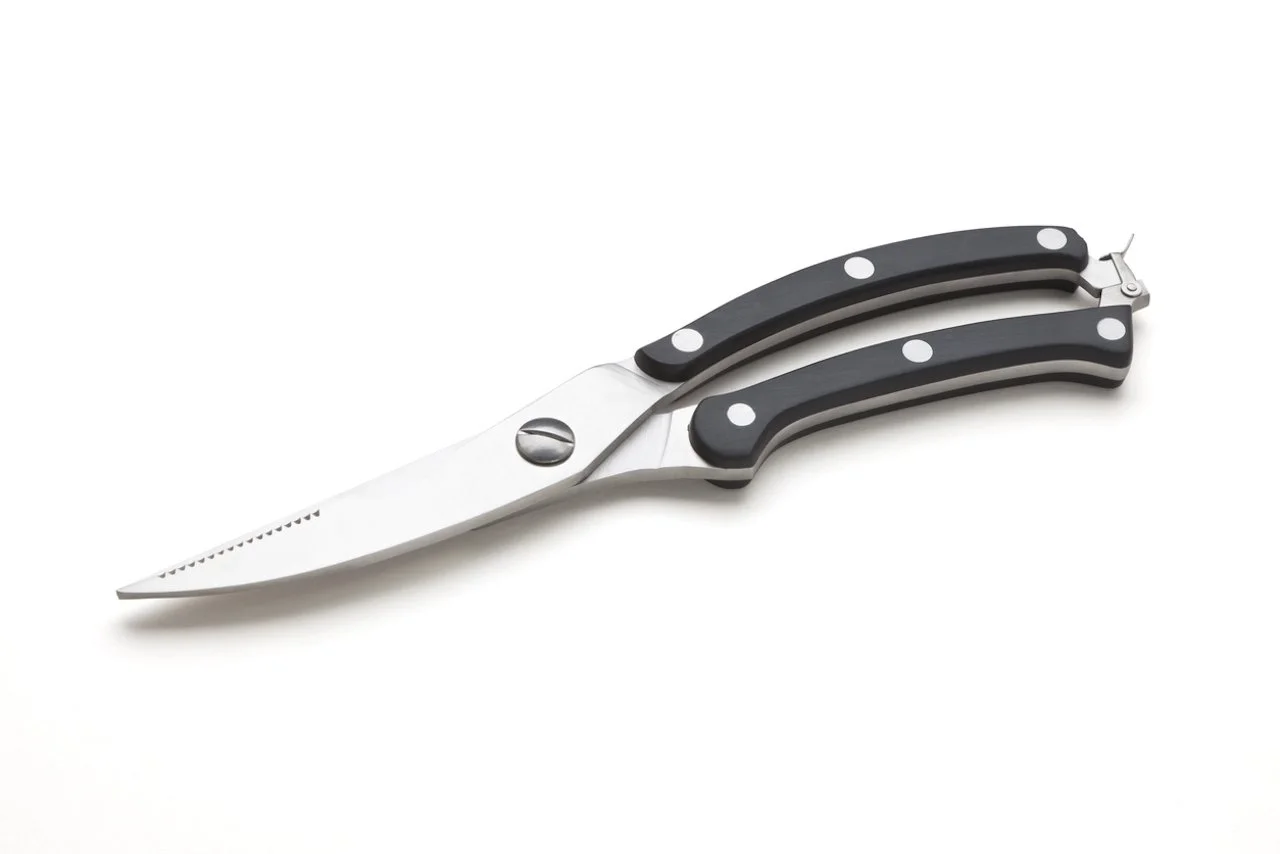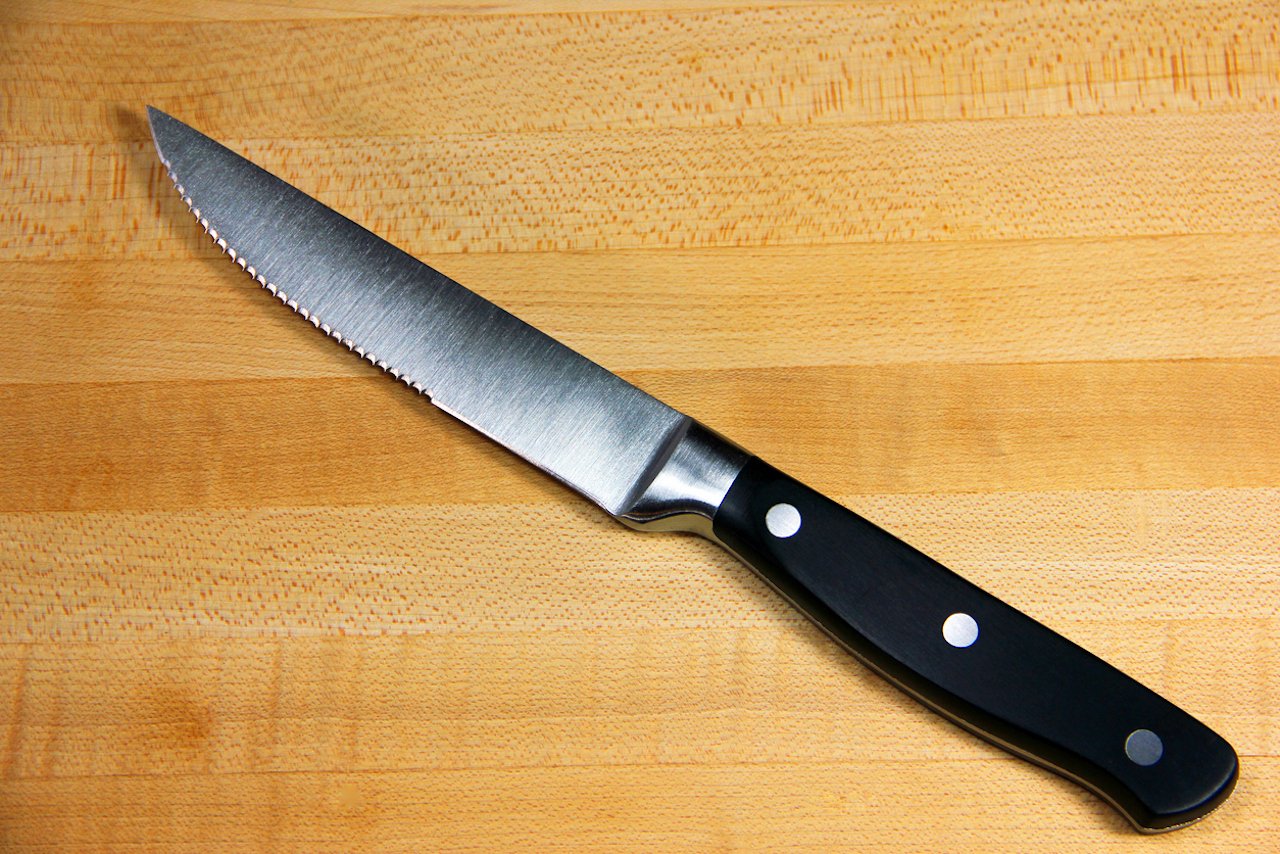Kitchen Knives & How To Use Them
Discover > Product Recs > Kitchen Knives & How To Use Them
There is a world of kitchen knives out there. Style, brand, material, full-tang, half-tang, or push tang? The options are wide, to say the least. But what knives are essential to any commercial or home kitchen? and exactly what are these knives used for? Let's explore a little more about it.
Knife Terminology
Blade: The main knife body includes the point, tip, edge, spine & heel.
Bolster: The band that joins blade to handle. It provides balance and protects the user's hand.
Butt: The back end of the handle.
Edge: The Sharp part of the blade.
Spine: Part of the blade opposite the edge.
Heel: Back end part of the blade near the handle.
Tip: First third of the top of the blade.
Forged: A blade made from a single bar of steel heated and pounded into shape.
Stamped: A blade cut from a large sheet of steel, then further process for durability and sharpened.
Tang: The part of the blade that extends into the handle.
Honing rod: Also known as knife steel is a device used to straighten the micro-teeth of a blade. Contrary to popular belief this is not the same as sharpening. No metal is removed during the process whereas sharpening does.
Grip: How the user holds the knife. It does not refer to the handle. Some common grips are the hammer grips, pinch grip and point grip.
Material
A wide range of steel is used for kitchen knives depending on who makes them and where they're from. The most common types are all made from different varieties of stainless and carbon steel.
Carbon Steel is made from smelted iron. In order to convert into carbon steel, sulfur, phosphorus, manganese, and carbon. The carbon makes up around 2.1% of the knife's total weight. High carbon steel is incredibly hard to cut, bend and forge. Once heat treated it becomes very hard and brittle making it easy to chip. Carbon steel's real power is in sharpness, however. It will stay sharp for a very long time despite its easy to sharpening. Carbon steel will also react to the environment it is in by staining upon contact with acidic food like citrus fruits and tomatoes and oxidizing as steel does when it comes in contact with oxygen. It is also observed by some that it leaves a slight metallic taste to food. That's more down to the individual, however.
Stainless steel is steel made with 10.5% chromium corrosion resistance. Although it is not totally impervious to the elements it can certainly be kept up to a lifetime. Stainless steel tends to be much harder to sharpen than carbon steel, but it can hold its edge very well as well. Stainless steel is much more malleable than carbon steel making it less likely to chip but easier to bend.
Style
First on the list is a knife that every home cook and professional chef should know and own. The chef knife. An all-rounder that cuts it all from meat to veggies to cheese. Chef knives are often between 6 and 12 inches long and have a broad blade that tampers upwards for optimal back and forth rocking. They are usually unserrated and come either forged(thicker and heavier) or stamped(thinner and lighter). A chef knife is good for any kitchen task, thus being the most popular type of blade amongst the culinary community. For chef knives, our favorite has to be the Victorinox Fibrox Pro 8" Chef's Knife. This is one of the most common chef knives in restaurants and many home kitchens around the world for good reason. The Fibrox handle is a dream to hold and it's perfectly balanced for almost all hand sizes, not to mention that it's pretty affordable as well.
The utility knife, basically used as a mini chef knife comes about 4-7 inches long and can be straight or serrated. It's great for tasks too small for a chef's knife such as mincing garlic cloves (how long do cloves last?). They usually have a scalloped edge for added flexibility. As with the Chef's knife, Victorinox also has the Victorinox Fibrox Pro 5" which pairs well with the full-sized knife. If you're anything like us, this is the knife you'll get if you already have the full-sized chef's knife.
The Santoku knife is the Japanese version of the western chef knife. It is often thinner and shorter and does not rock due to its flat blade. It's great for thinly slicing foodstuffs. Made with a hollowed edge to ensure faster and more precise slicing. It's the perfect chef knife alternative for people with smaller hands as it is significantly lighter sure to its thin blade. Victorinox also has a 7" Fibrox Santoku knife that makes vegetable chopping a breeze and also has the fibrox handle that makes slippage a thing of the past.
No kitchen would be fully complete without a pair of kitchen shears. Although not essential to a smooth flowing kitchen it often helps. With its extremely strong and sharp blades, its purpose stretches far further than snipping herbs and spices. Kitchen shears can also be used for tough jobs such as sectioning poultry. Kitchen shears should be comfortable on your hand as you will need to maneuver the shears if you're using it for poultry, this is why we like the Victorinox 4-inch kitchen shears in our home.
When separating meat from bone, it should be rather obvious that your go-to knife should be a boning knife. It comes between 3 and 8 inches long and in three different flexibility ranges. Flexi, semi-flex and stiff. Not only is it known for its precision cutting, but it's also well-liked in the vegetarian community for its great ability to slice veggies. If you're in the market for a boning knife, do consider the Victorinox Fibrox 6-inch boning knife, it has a flexible blade and the Fibrox handle makes it a dream to maneuver.
A bread knife, used primarily for cakes and bread, is designed to cut without pushing down and squishing your dish. Its big, sharp teeth and long blade work well to evenly slice bread with precision. A knife like the Victorinox 8" serrated bread knife will go a long way in ensuring that your artisan bread is sliced properly and not get squished.
Commonly associated with butchers, a cleaver is likely to be the heaviest and bulkiest knife in your drawer. Used for chopping through meat and bone it's obvious why it features a thick, strong spine and a wide, heavy blade. However meat and bone aren't their only function. Cleavers are also great for chopping hard, thick veggies such as pumpkin or squash. Having a good grip on your knife paramount, especially when it comes to cleavers, so this is why the Victorinox Classic Chinese Cleaver is our choice when it comes to chopping meats and other tough kitchen ingredients.
If you enjoy your presentation and garnishes in your dish, more often than not, you will find yourself reaching for a paring knife. With its short 3-4 inch body and pointy tip, it is perfect for small precision cuts. Different tips for different uses include spear point, sheepsfoot, and birds beak. We consider paring knives to be more of a want than a need in the kitchen, so if you really want a great paring knife, you can't go wrong with the Shun 3.5inch Limited Edition Paring Knife. Not only is it super sharp, but it looks gorgeous as well.
If you're a Texan, you probably love steak. Steak knife, hence the name, is probably the knife you'll be reaching for most. They can come serrated or non-serrated, although serrated tends to be more popular due to less sharpening. Since steak knives are used on the table, they not only need to be functional, but beautiful as well. This is why our choice of steak knives is the J.A. Henckels International Steak Knife.
Just like the boning knife, a filleting knife is designed to remove meat from bone. The difference is a filleting knife is often longer, more flexible, and thinner. Hence it being ideal for filleting whole fish. These days companies combine the two for a dual wield experience, but any experienced cook will be able to tell the difference. Personally, I use Yanagiba-style Japanese knives for filleting as the long blade allows you to slice and fillet fish in one stroke, leaving a smoother cut. It may be a bit pricy but the Global G-11 10-inch Yanagi Sashimi knife is worth every penny.



